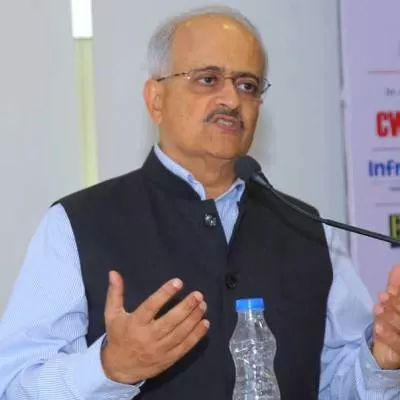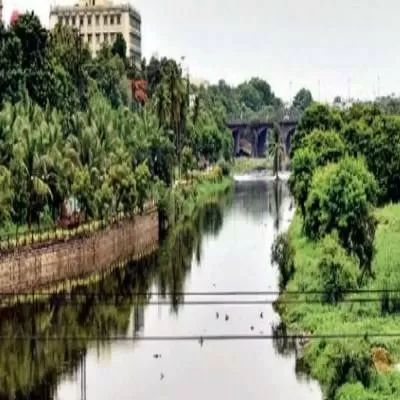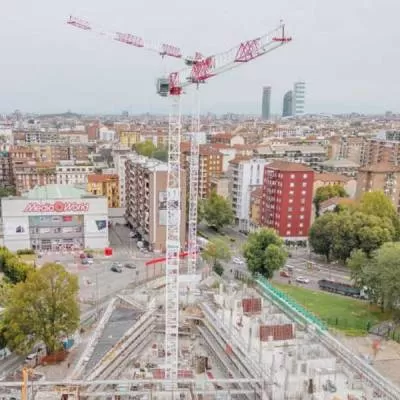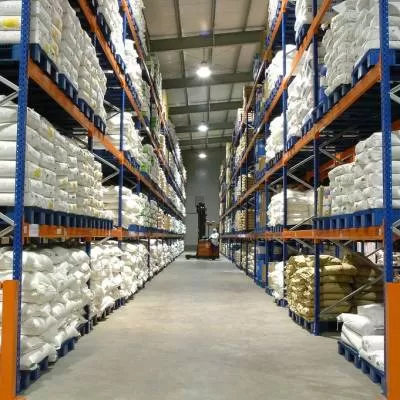- Home
- Infrastructure Urban
- WAREHOUSING & LOGISTICS
- Finding Nimmo
Finding Nimmo
Ladakh is synonymous with mountains, tourism, an incredible tranquillity. However, a massive cloud burst in early August last year wiped away almost all signs of serenity, bringing sheer devastation. It triggered torrential rains, flash floods and mudslides, snatching homes and, in many cases, lives. It caused extensive damage to life, property and infrastructure.
Last year, TCI Foundation (TCIF) - the social arm of Transport Corporation of India - under the guidance of Vice Chairman & Managing Director, DP Agarwal, decided to contribute to rehabilitation work in the area. After a series of meetings with the deputy commissioner of Ladakh, the company planned out a relief plan. TCIF adopted village Nimmo, located 35 km away from Leh, and constructed six houses in less than a year.
The master plan
"Nimmo has a difficult geographical terrain," says Agarwal. "Moreover, it is secluded and located in the interior of Ladakh. Hence, given the lack of known developers or builders in that region, the construction was managed by our representatives by engaging local labourers."
TCIF commenced work on the houses in October 2010 and the foundation for all six was completed by mid-November 2010. However, the freezing weather in winter forced the workers to halt construction, which was then resumed in mid-May. All six houses were successfully completed by the second week of July 2011.
Made to order
The construction was customised in keeping with the design and climatic requirements of Leh and Ladakhi sensibilities. The houses are equipped with all basic amenities and are weather-resistant. Each house has four rooms - a veranda, two rooms, kitchen and bathroom - with a total built-up area of 725 sq ft. Also, given the climate, TCI has provided for a bukhari (heating system) in all the houses. "The requirement for the houses in Leh was different from other parts of the country owing to the extreme climatic conditions," Agarwal informs. "In fact, all the materials were according to the deputy commissioner's specifications."
Construction was carried out with stone, keeping in mind the need for resilience. The roofs have been made using wooden ballis and tallus to keep the temperature under control, and the rest of the materials used were wooden pattas, gitti, sand, and a special soil (available in Ladakh), used for the inner and outer plasters of the walls and floors in three rooms. The upper roof has a 6 inch layer of soil plaster. The bathrooms have also been provided with stone flooring and each house is well ventilated for sunlight and has six windows with glass fittings. All the houses have been plastered and whitewashed.
Building blocks
"It was indeed a challenge to construct houses in Nimmo," says Agarwal. Apart from the extreme climate - temperatures in Leh go down to minus 30° C - there was an acute labour shortage after the cloudburst. Most labourers in the region are from Bihar and Nepal and they had left town after the calamity. Under such dire circumstances, the company managed to hire around 18-20 labourers from Ladakh district with great difficulty and complete the foundation for the six houses. Procuring raw material supply was another challenge. The roads in Ladakh remain closed during the major part of the winter and open only by May. Keeping this in mind, raw material was stored onsite. The wooden materials were transported from Srinagar to Nimmo.
The total investment in the project amounted to around Rs 35 lakh. It is indeed remarkable that TCI is the only corporate body to have gone forward to help the flood victims of Ladakh. It has now handed over the houses to the victims and, more important, completed the task according to the design approved by the local administration within the shortest possible time.
Materials used:
• Natural stone
• Wood: ballis/tallus/pattas
• Gitti
• Sand
• Ladakhi soil
• Cement
In an endeavour to salvage the lives and homes of the Ladakh cloud burst victims, the Transport Corporation of India adopted Nimmo village and constructed six houses with the design and materials approved by the local administration.Ladakh is synonymous with mountains, tourism, an incredible tranquillity. However, a massive cloud burst in early August last year wiped away almost all signs of serenity, bringing sheer devastation. It triggered torrential rains, flash floods and mudslides, snatching homes and, in many cases, lives. It caused extensive damage to life, property and infrastructure.Last year, TCI Foundation (TCIF) - the social arm of Transport Corporation of India - under the guidance of Vice Chairman & Managing Director, DP Agarwal, decided to contribute to rehabilitation work in the area. After a series of meetings with the deputy commissioner of Ladakh, the company planned out a relief plan. TCIF adopted village Nimmo, located 35 km away from Leh, and constructed six houses in less than a year.The master planNimmo has a difficult geographical terrain, says Agarwal. Moreover, it is secluded and located in the interior of Ladakh. Hence, given the lack of known developers or builders in that region, the construction was managed by our representatives by engaging local labourers.TCIF commenced work on the houses in October 2010 and the foundation for all six was completed by mid-November 2010. However, the freezing weather in winter forced the workers to halt construction, which was then resumed in mid-May. All six houses were successfully completed by the second week of July 2011.Made to orderThe construction was customised in keeping with the design and climatic requirements of Leh and Ladakhi sensibilities. The houses are equipped with all basic amenities and are weather-resistant. Each house has four rooms - a veranda, two rooms, kitchen and bathroom - with a total built-up area of 725 sq ft. Also, given the climate, TCI has provided for a bukhari (heating system) in all the houses. The requirement for the houses in Leh was different from other parts of the country owing to the extreme climatic conditions, Agarwal informs. In fact, all the materials were according to the deputy commissioner's specifications.Construction was carried out with stone, keeping in mind the need for resilience. The roofs have been made using wooden ballis and tallus to keep the temperature under control, and the rest of the materials used were wooden pattas, gitti, sand, and a special soil (available in Ladakh), used for the inner and outer plasters of the walls and floors in three rooms. The upper roof has a 6 inch layer of soil plaster. The bathrooms have also been provided with stone flooring and each house is well ventilated for sunlight and has six windows with glass fittings. All the houses have been plastered and whitewashed.Building blocksIt was indeed a challenge to construct houses in Nimmo, says Agarwal. Apart from the extreme climate - temperatures in Leh go down to minus 30° C - there was an acute labour shortage after the cloudburst. Most labourers in the region are from Bihar and Nepal and they had left town after the calamity. Under such dire circumstances, the company managed to hire around 18-20 labourers from Ladakh district with great difficulty and complete the foundation for the six houses. Procuring raw material supply was another challenge. The roads in Ladakh remain closed during the major part of the winter and open only by May. Keeping this in mind, raw material was stored onsite. The wooden materials were transported from Srinagar to Nimmo.The total investment in the project amounted to around Rs 35 lakh. It is indeed remarkable that TCI is the only corporate body to have gone forward to help the flood victims of Ladakh. It has now handed over the houses to the victims and, more important, completed the task according to the design approved by the local administration within the shortest possible time.Materials used:• Natural stone• Wood: ballis/tallus/pattas• Gitti• Sand• Ladakhi soil• Cement
























